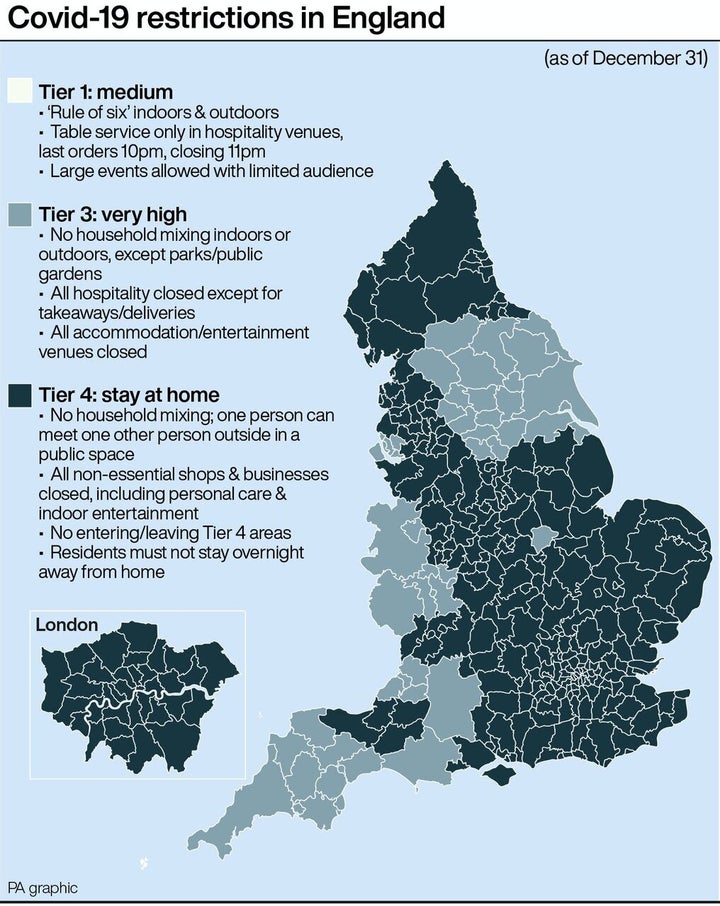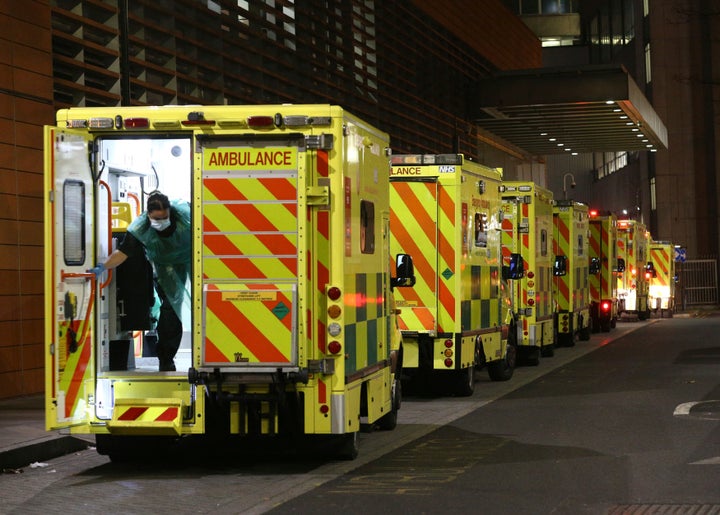Coronavirus infections continue to increase across most areas of England amid warnings of “burnout” among NHS staff who are currently at “battle stations”.
Saffron Cordery, deputy chief executive of NHS Providers, said the next few weeks would be “nail-bitingly difficult” for the health service.
The number of people who have died in the UK after testing positive for coronavirus has risen to 74,125 – an increase of 613 over 24 hours. A further 53,285 lab-confirmed cases were also reported.
A British Medical Association (BMA) survey also found that 67% of doctors reported that current levels of fatigue and exhaustion were higher than normal as they tackle a mounting second wave and a growing backlog of care on top of the usual seasonal demand.
In London cases are decreasing in all areas except Harrow (8%), Brent (7%), Newham (4%), Barnet (3%), Ealing (2%) and Sutton (1%) but case numbers overall remain high.
Elsewhere, the fastest rises in infection rates are areas outside of London and the South-East, mostly in regions still under tier 3 restrictions.

The data below is taken from NHS Digital and relates to the seven-day period up to December 29. It shows the percentage rise in cases followed by the number of cases per 100,000 people in brackets.
For context, the government’s own threshold for quarantining overseas travellers is 20 cases per 100,000 people over a seven-day average.
Brits visiting countries with higher case rates are required to quarantine for 10 days upon their return.
- Cornwall and Isles of Scilly 115% (193.8)
- Wirral 92% (368.2)
- York 89% (370.8)
- Shropshire 75% (176.4)
- Sefton 73% (274.2)
- Knowsley 70% (300.3)
- Cumbria TIER 4 70% (336.0)
- Halton 68% (325.3)
- Swindon TIER 4 67% (387.1)
- Redcar and Cleveland TIER 4 62% (205.6)
- North Yorkshire 55% (244.8)
- Gateshead TIER 4 55% (312.3)
- Cheshire West TIER 4 53% (371.6)
- Sunderland TIER 4 53% (302.8)
- Cambridgeshire TIER 4 43% (326.7)
- Sandwell TIER 4 42% (466.7)
- Bournemouth Tier 4 42% (296.0)
- Plymouth 40% (193.4)
- Slough TIER 4 37% (810.5)
- Dorset 35% (153.5)
- Wolverhampton TIER 4 35% (533.5)
- Bath and North East Somerset 34% (209.5)
- North Somerset 34% (275.3)
- NorthumberlandTIER 4 33% (259.9)
- Hartlepool TIER 4 33% (543.4)
Adrian Boyle, vice president of the Royal College of Emergency Medicine, said people were “tired, frustrated and fed-up”, telling BBC Breakfast: “What is it going to be like over the next couple of months?
“I don’t know, I am worried.”


Figures published on New Year’s Eve show just less than a third of acute trusts have more Covid-19 patients than at any point since the pandemic began, with union leaders warning about staff burnout, soaring sickness levels and “intolerable” pressures.
The situation is dire in Northern Ireland, where bed occupancy in the health service is now at 100%, with ambulance crews braced for long delays.
All of mainland Scotland and Skye remained under the highest curbs as 2021 began.
